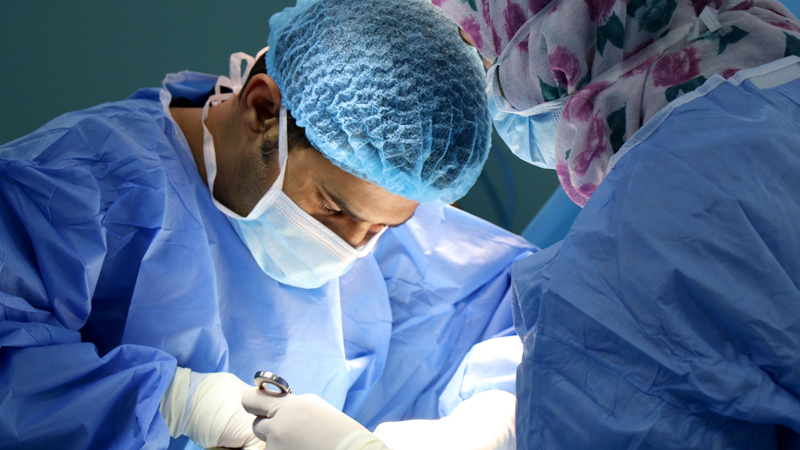
Cancer Surgeries
Cancer surgeries are procedures performed to remove malignant tumors and, in some cases, surrounding tissues to prevent the spread of cancer. These surgeries are crucial components of cancer treatment and can be performed for various purposes, such as diagnosis, staging, treatment, and palliation.
Types of Cancer Surgeries
1. Curative Surgery
- Purpose: To remove the entire tumor and a margin of healthy tissue.
- Indications: Often used for early-stage cancers that have not spread (localized tumors).
- Examples: Lumpectomy for breast cancer, prostatectomy for prostate cancer, and colectomy for colon cancer.
2. Debulking Surgery
- Purpose: To remove as much of the tumor as possible when complete removal is not feasible.
- Indications: Used to enhance the effectiveness of other treatments, such as chemotherapy or radiation therapy.
- Examples: Debulking surgery for ovarian cancer.
3. Palliative Surgery
- Purpose: To relieve symptoms and improve quality of life in advanced cancer stages.
- Indications: Used when cancer is not curable and aims to alleviate pain or other complications.
- Examples: Surgery to relieve bowel obstruction in gastrointestinal cancers.
4. Preventive (Prophylactic) Surgery
- Purpose: To remove tissue that does not yet contain cancer cells but has a high risk of developing into cancer.
- Indications: Used in individuals with high-risk genetic mutations or precancerous conditions.
- Examples: Prophylactic mastectomy in BRCA mutation carriers, colectomy for familial adenomatous polyposis.
5. Diagnostic Surgery
- Purpose: To obtain a tissue sample (biopsy) for histopathological examination to diagnose cancer.
- Indications: When imaging studies are inconclusive and tissue diagnosis is necessary.
- Examples: Needle biopsy, excisional biopsy, and endoscopic biopsy.
6. Staging Surgery
- Purpose: To determine the extent of cancer spread (staging).
- Indications: Helps in planning further treatment by assessing the cancer stage.
- Examples: Laparoscopy for staging ovarian cancer, lymph node dissection.
7. Reconstructive Surgery
- Purpose: To restore the appearance or function of an area affected by cancer surgery.
- Indications: Often performed after curative surgery to improve quality of life.
- Examples: Breast reconstruction post-mastectomy, facial reconstruction after head and neck cancer surgery.
Common Cancer Surgeries by Type
- Breast Cancer: Lumpectomy, mastectomy, sentinel lymph node biopsy.
- Colorectal Cancer: Colectomy, low anterior resection, abdominoperineal resection.
- Lung Cancer: Lobectomy, pneumonectomy, wedge resection.
- Prostate Cancer: Radical prostatectomy.
- Ovarian Cancer: Oophorectomy, debulking surgery, hysterectomy.
- Skin Cancer: Excisional surgery, Mohs surgery.
Recovery
- Hospital Stay: Varies by the type and extent of surgery, ranging from same-day discharge to several days.
- Postoperative Care: Includes pain management, wound care, prevention of infection, and monitoring for complications.
- Activity: Gradual return to normal activities, avoiding strenuous activities for several weeks.
- Follow-up: Regular appointments for monitoring recovery, assessing for recurrence, and planning further treatment if needed.
Benefits
- Tumor Removal: Directly removes cancerous tissue, which can be curative in early-stage cancers.
- Symptom Relief: Alleviates symptoms caused by tumors, such as pain or obstruction.
- Improved Survival: Increases the chances of survival when combined with other treatments.
Risks and Complications
- Infection: Risk of infection at the surgical site or in the body.
- Bleeding: Risk of significant blood loss during or after surgery.
- Pain: Postoperative pain, which can be managed with medications.
- Organ Damage: Accidental injury to surrounding organs or structures.
- Recurrence: Cancer may recur if not all malignant cells are removed.
Alternatives
- Radiation Therapy: Using high-energy rays to kill cancer cells.
- Chemotherapy: Using drugs to kill or slow the growth of cancer cells.
- Targeted Therapy: Drugs that target specific molecules involved in cancer growth.
- Immunotherapy: Stimulating the immune system to fight cancer.
- Hormone Therapy: Blocking hormones that fuel certain cancers.
Patients should have detailed discussions with their healthcare team to understand the specific type of cancer surgery, potential benefits and risks, and the overall treatment plan. This personalized approach ensures the best possible outcome based on the individual's condition and cancer type.
